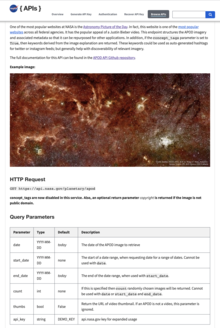An application programming interface (API) is an interface that allows the user to access information from another service and integrate this service into their own application. Through a set of defined requests, the asking application is allowed to access limited pieces of the called upon application’s functionality. APIs are used to share limited functionality between programs. One example of an API is the Facebook share button on this page, another is Yelp’s use of Google maps to display nearby restaurants.
An application programming interface (API) is a way for two or more computer programs to communicate with each other. It is a type of software interface, offering a service to other pieces of software. A document or standard that describes how to build or use such a connection or interface is called an API specification. A computer system that meets this standard is said to implement or expose an API. The term API may refer either to the specification or to the implementation.
In contrast to a user interface, which connects a computer to a person, an application programming interface connects computers or pieces of software to each other. It is not intended to be used directly by a person (the end user) other than a computer programmer who is incorporating it into the software. An API is often made up of different parts which act as tools or services that are available to the programmer. A program or a programmer that uses one of these parts is said to call that portion of the API. The calls that make up the API are also known as subroutines, methods, requests, or endpoints. An API specification defines these calls, meaning that it explains how to use or implement them.
One purpose of APIs is to hide the internal details of how a system works, exposing only those parts a programmer will find useful and keeping them consistent even if the internal details later change. An API may be custom-built for a particular pair of systems, or it may be a shared standard allowing interoperability among many systems.
There are APIs for programming languages, software libraries, computer operating systems, and computer hardware. APIs originated in the 1940s, though the term did not emerge until the 1960s and 1970s. Contemporary usage of the term API often refers to web APIs, which allow communication between computers that are joined by the internet. Recent developments in APIs have led to the rise in popularity of microservices, which are loosely coupled services accessed through public APIs.



